I have already talked about Fiasco before, about how it is role-playing at is purest. A GM-less system, with no character sheets, very little rolling of dice that relies heavily on improvisation and story telling. I am writing about it again, now in its own dedicated review because it really is very, very fun. The rules are incredibly simple yet somehow it all just….works. Each time you sit down to play Fiasco, a few hours later you will have a complete story – your very own little movie, probably full of nasty horrible characters with powerful ambition and poor impulse control.
• Designer: Jason Morningstar
• Publisher: Bully Pulpit Games
• Number of Players: 3-5
• Playing Time: 2-4 hours
So what actually is Fiasco? Well simply…it is a book. A cheap little book that you can probably pick up for £15 – £20. This book provides all the rules, and various other nuts and bolts to create your very own Fiasco movie. The Cohen Brothers, Tarantino, Guy Richie, the game takes influences from all of these film makers and many more. It draws from films where everybody has a plan and, usually, nobody really succeeds.
At the very centre of a game of Fiasco is a Playset. The book comes with four but many more are available for free online. The playset provides the general setting and feel for your game. Some are stereotypical Cohen brothers settings, suburban or small town America whereas others go way left field. Your game could be set in Antarctica, Gangland London, a crumbling space station, or 16th century Florence. If you do not fancy any of the currently available playsets, well you can write your own – setting your game wherever and whenever you want.
Aside from providing a loose setting for your story the bulk of a Fiasco playset provides the many components required to setup your game, namely, Relationships, Needs, Objects and Locations. These vary drastically from playset to playset but the format is always the same. Each thing is split into six categories and each category is then further split into six elements. This is where the dice come in. For each player you will need four dice, two in one colour and two in another. When everyone is ready you roll the big pile of dice in the middle of the table and use those numbers to create the initial characters and threads that will kick off your story. Taking in turns each player picks up a dice and defines a relationship. Perhaps they look at the playset and see that a number 5 can be used to create a crime relationship…so they pick up the dice and set up that relationship with the player to their left. The player to their left uses another dice to further detail those relations, perhaps making them petty drug dealers, or maybe a crime boss and underling.
This continues until there is a ring of relationships around the table. In my first game we played using the London Gangsters playset. To my right was my husband, and to his right was an old army friend. This friend had set himself up as some sort of black market arms dealer and he was sitting next to one of his underlings. To the underling’s right was one of his colleagues who was sitting on my left and was my lover – someone I was secretly having an affair with. With just the relationships the start of our story was already unstable and explosive. The remaining dice are used to further destabilise things. A location was added for the the two work colleagues – a local cafe which the gun runners used to hide their stock. To both my left and my right my character simply had the need to get laid – but for two very different reasons. Between my husband and his former army friend we added an object…a katana. The start of our story was now almost complete. We had a few hooks to begin with. A few interesting characters. Some criminal “masterminds”. And a really big sword. How this would all come together and form a sensible story we did not know. You just have to roll with.
Once the setup is complete and everyone knows who they are and has given their character a name you take it in turns to simply act out the story. Where you take the story and what you actually make your characters…do…is well, completely up to you. However, this is a collaborative story telling experience. Everyone has the ability to pull and prod the story in the directions they want, but it is completely equal. No one player has any more power than anyone else. With no GM, there is no single story teller who has the bulk of narrative control. That narrative control is divided equally into 4 or 5 perfect little chunks and then given out to each player.
The dice that were used to setup your characters and initial plot threads are returned to the middle of the table but now the numbers on them are irrelevant. Instead it is all about the colours. Half the dice on the table will represent good outcomes and the other half will, unsurprisingly represent bad outcomes for your character. When it is your turn you have a choice. Do you want to establish a scene? Do you want to decide what your character is currently doing, who they are talking to and what they are talking about? Or instead maybe you just want to decide the outcome of your scene? You do not know how the scene will start but you are damn sure it will end well for your character. Importantly you cannot do both, what you do not pick, the other players control.
Here is how it works: It is your turn and you want to establish a scene. You look at the table and see the various threads and plot hooks that are available. You decide it is time to get your character out of the abusive relationship she is in with her lover. She needs to get rid of him and go back to her husband before he finds out so you tell the group that you want to have a scene where you try and break up with your paramour. And then….well you just act out the story. Both you and anyone else present in the scene acts out in character whatever you established. You shout, you argue, you cry, you laugh, you simply do whatever fits in with the scene. But because you established the other players decide how that scene will end. Halfway through the scene with the lover another player not present hands you a bad dice from the table. Without breaking a stride and without interrupting the story that player has let you know where the scene must go. It must end badly for your character. So you act accordingly. You try and break up with the abusive lover but instead he pulls you back in. You don’t get what you wanted for your character. You got to push the story in one direction…but all the other players pushed it right back.
The dice mechanic is, simply, fantastic. They act as an amazing pacing mechanism. With an equal number of good and bad dice you can not just punish every character with bad outcomes. Your character’s arc can swing wildly from fantastic to abysmal as you are handed good then bad dice. It’s also surprisingly fun handing out the dice especially when you do it without breaking or pausing the scene at all. Two players are in character opposite you arguing about how they are going to sell their stash of guns and with just a few looks and hand gestures around the table you and the other players decide what die to give. Every now and then you will also get the ability to establish a scene for another player, a player who desperately wants a good outcome for their character. After just a few scenes a story will start forming and the setup you made at the start will be falling apart at the seams….in a good way of course.
The dice are so much more than just a pacing mechanic though and act almost as a marker of your characters performance – tokens which will explain how your character will fair when the story is over. In the first act any dice that you are given during scenes are passed on to other players. Perhaps you hand a bad die to a character who has been particularly mean to you in the story or something similar. In the second half of the game any dice you receive you keep. Either way as the game goes on you will accrue a little pile of dice in front of you, some good, some bad. These personal dice are used for two things during the game: The Tilt and The Aftermath.
The Tilt occurs at the end of the games first act, when half the dice have been used and everyone has had two scenes. Every player rolls the dice they currently have and from this one player will have the highest good dice roll and another will have the highest bad dice roll. These two players then, using the dice left in the middle of the table, essentially perform a mini setup. Using a table in the book they add two more elements to the story. By this point your story should almost be at the point of exploding. The Tilt is the detonator. The things added during the tilt are generally very, very bad. Perhaps something is going to be set on fire. Maybe the police have to show up in the next act. Or maybe it is simply that someone is going to die gruesomely. The tilt adds the perfect amount of extra random chaos to an already chaotic mess. Once complete the second act continues in much the same way as the first but, as the book makes clear multiple times, you tilt the hell out of it. If something has to get set on fire make it something amazingly important to the story. If the police have to turn up then get them into the story as quickly as possible. If someone has to die….well….then just kill them.
Once these bits are added and the story reaches its ultimate climax all that is left is to end the story. Once that last dice has been played and that last scene completed you will, most likely find yourself at some cliffhanger. In our London Gangsters game by the end everyone had ended up at the cafe. A stupid plan had ended perfectly, the whole building was ablaze (both tilt elements obviously) and one character was bleeding out from a rather vicious katana wound. The final scene ended with the establishing character charging into the cafe with the katana raised. What do you do next? You roll your dice one last time and find out how bad things really will end for your precious character.
In the Aftermath, as with The Tilt, you roll all your dice. You add up all the numbers for each coloured dice and subtract the smaller number away from the bigger number. This will leave you with a number in either good or bad dice. Go through the game getting mostly bad dice – well you will likely get a very high bad number. Finish the game with an equal amount of good and bad dice – well you will probably end up with a very low number or possibly a dreaded zero. See, whereas before one colour dice definitely represented a worse outcome than the other at the end of the game all you want is a high number. Having a equal number of both dice is a sure fire way to spell disaster for your character. The number you roll is cross referenced with another table in the book – the aftermath table. A high bad or a high good number both mean great outcomes for your guy. A zero…well….that means a fate worse than death. Everything in between ranges from death, to severe injury, to incarceration and financial ruin.
It is very, very likely that no one will come out that well from a game of Fiasco but that really is not the point. If everyone ends up dead or crippled then you have likely told a fantastic story. All that is left to do is explain, in the form of a little montage how your character gets from that final scene to the outcome dictated by the aftermath table. Once that is complete the story is over and the game is done.
[youtube id=”WXJxQ0NbFtk” align=”center” mode=”normal” autoplay=”no” maxwidth=”530″]
What really gets me about Fiasco is how the rules are so ridiculously simple and yet it works so well. In effect there really are not any rules. You just tell a story. Yet, the little dice mechanic that the whole thing runs off is far more clever than it first appears. It paces the story beautifully. It adds a great way to track your character and work out how badly things will end for them. It offers just enough control over your character whilst not letting any one player control the story too much. With the Tilt and the Aftermath it adds just the right amount of randomness to throw in some surprises. It is amazing to go through the whole game getting almost nothing but bad dice and then in the aftermath find out that your character is the only person to survive – and then you have to work that into the games final montage!
As you get deeper into the game and play it more you realise that there are so many interesting things you can do to mess with the system. A prime example of this is how the game deals with time, or more specifically, how it does not really give a crap about linearity. There is no reason why the scene you perform has to follow on chronologically from the last. You can use flashbacks, flash forwards, surprisingly large jumps in the chronological narrative all just to mess with the story. In that first London Gangsters game I have described already we ended the first act with a stand off. One character had a gun pointed at my character and things were not looking great. The logical next scene should have picked up right where that left of, but instead the player just established a scene three days later. Everyone was alive and well and yet….we had no idea how. Much later another player established a flashback scene so we could go back and find out, as a group what happened.
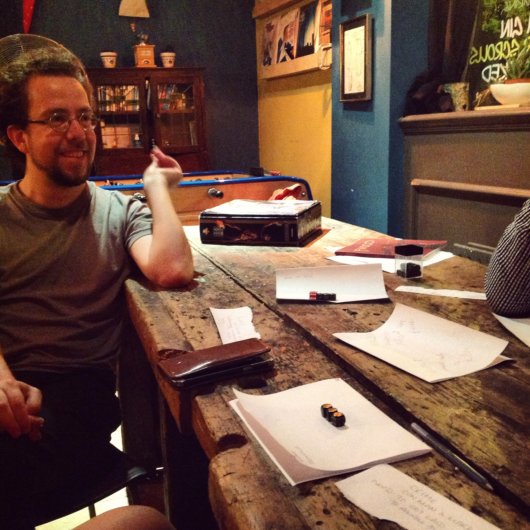
However, my favourite example of how time, and non linearity can create such amazing Fiasco stories comes from a later game. We were using the fantasy playset, Dragon Slayers, full of D&D tropes and parodies. One of the items from the setup was a crystal ball of future sight that a character stole in a very early scene. When it was their turn to perform a scene after the theft, instead of carrying on chronologically their scene occurred within the crystal ball. The scene was them looking into the future, observing a conversation with them and another character, a conversation that had not yet happened. This scene, set an unknown amount of time in the future, introduced a whole host of random elements that had not been mentioned yet. A city was on fire. The king and his army were approaching. A diamond bracelet had been stolen. Suddenly the scene is over and we are back in the present.
Slowly but surely, as each player played their scene we push the story towards that glimpse of the future. A few hours and 10-12 scenes later and we had come full circle. The diamond bracelet was now the most important part of the story. A fight in a nearby town involving my character had set the whole place ablaze. The King’s men were finally approaching to recover their stolen property.
It was amazing but what was even cooler was we did not really have to try very hard to pull off this cyclical non-linear story telling feat. With just a gentle push from each player and the odd mention of components from the crystal ball flashforward the story just naturally seemed to end up there. It was a perfect example of how the simple dice mechanic is so deep and so nuanced. For those who are interested and want to get even deeper you can also purchase the Fiasco Companion. As well as including ideas for using Fiasco as a writing or acting aid it includes extra rules, more playsets and also Tilt tables and Aftermaths that focus less on death and destruction and more on social drama.
In terms of negatives the only real thing I can say is that Fiasco definitely requires the right people to work. This is not a snobby or patronising remark it is just that Fiasco is, at the end of the day, a game all about improvisation and….well….acting. If you do not feel comfortable embodying a random character and performing wacky scenes then you might not have a great time. Even if you love roleplaying games this may not be the game for you. I have a friend who loves D&D and other, more rules heavy games but, has said to me that he does not want to play Fiasco. He was not being mean he just knows that this is not his cup of tea. There is a certain comfort, or at least a much higher level of guidance when playing a more traditional roleplaying game. Fiasco, and other story games are so lose and so open that for some players it will not be fun. Conversely though, the lose nature of the rules might attract players who have no interest in traditional roleplaying or board games in general.
It is also worth mentioning that most games will often be about violence and possibly sex. This is not an absolute and there are playsets out there that will be less crude but in the few games we have had the romance factor has been a big element. As I mentioned above, in the first game I played I had romance relationships with both the player to my left and right and I also had the Need to get laid with both of them. In practically every scene I was in, sex was usually involved culminating in a very awkward (but tongue in cheek) sex scene at one point. From my point of you, it was hilarious and everyone else I was playing with also found the scene equally ridiculous and just good fun. It probably goes without saying that this is a game to play with people you are comfortable with and also to check beforehand if there are any subjects or topics that some players might find uncomfortable and should be avoided in whatever story you tell.
There are a couple of other things I could pick at. If you are coming from a board game perspective then a game of Fiasco can take quite a while. Anywhere between 2 – 4 hours depending on how long you like your scenes. However, from a role-playing point of view this is not really that bad and also by the end of it you will have a complete, finished story. It also requires a LOT of six sided dice which can be a pain especially if you try and have an impromptu game. For a full game of 5 people you needs 20 six sided dice, 10 in one colour and 10 in other. Even ardent roleplayers might not have this many dice to spare. These really are silly points to moan about though. With the right group, in the right mood, and with enough time (and enough dice), Fiasco is an absolute blast.
Fiasco has introduced me to a whole new genre of role-playing, known as story games. As I have briefly hinted here and gone into more detail in my previous article I got into role playing games thinking it was just about fantasy stories and polyhedral dice. Of course, for many games that is the case, but Fiasco and its ilk show how role playing games can be so much more. The designer of Fiasco, Jason Morningstar has created a whole host of similar, rules light, story heavy games. Durance focuses on the settlers of a prison planet. Grey Ranks tackles the horrific subject of children in war focussing on the lives of kids during the Warsaw Uprising. Bully Pulpit’s most recent game, The Warren, by Marshall Miller is a horror game all about rabbits escaping predators – effectively Watership Down: The Roleplaying Game.
After playing Fiasco I am itching to play all of these but more importantly I just want to play Fiasco with more people. Fiasco is for fans of roleplaying games yes, but it is also for fans of acting, for fans of improv, for fans of storytelling, for fans of cinema. There are so many people, who would usually never even consider role playing games that would love this game. If you enjoy telling stories then you are probably one of them.
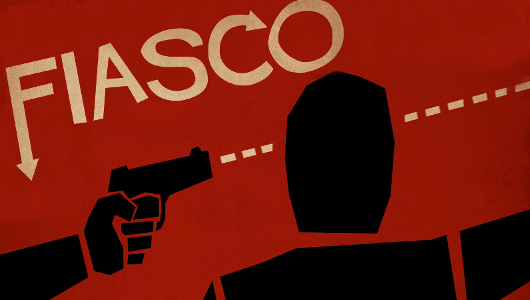

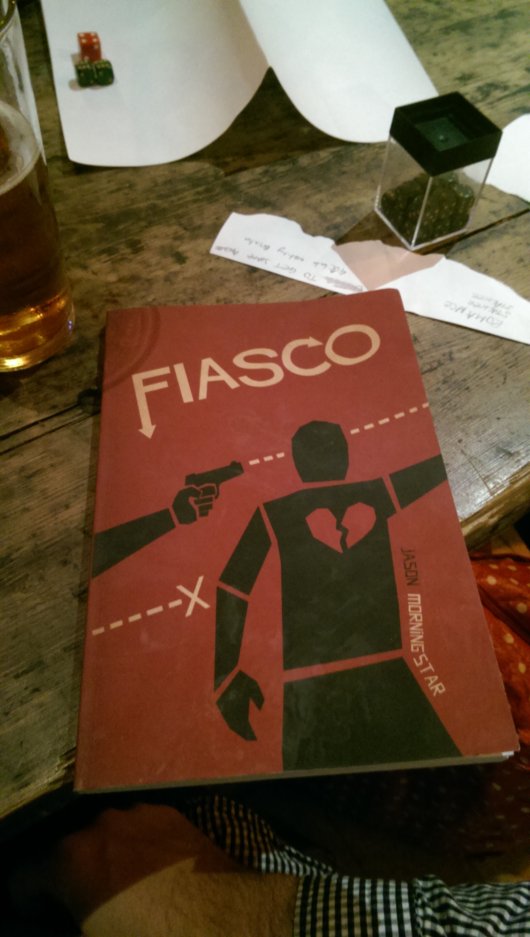
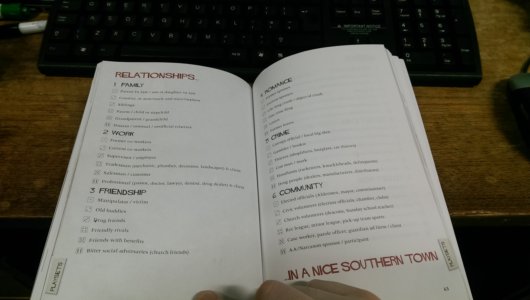
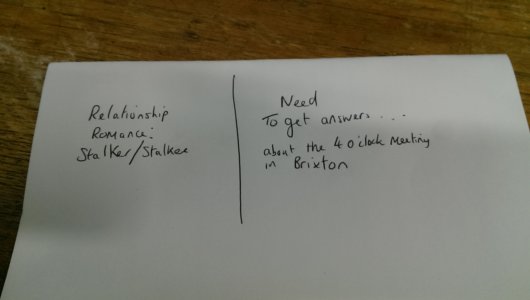
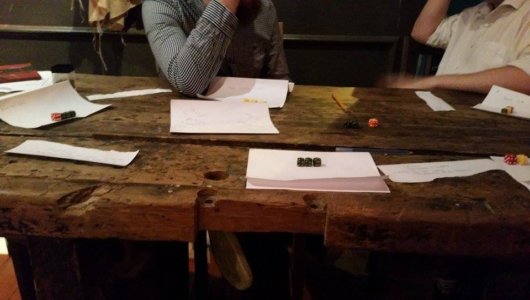

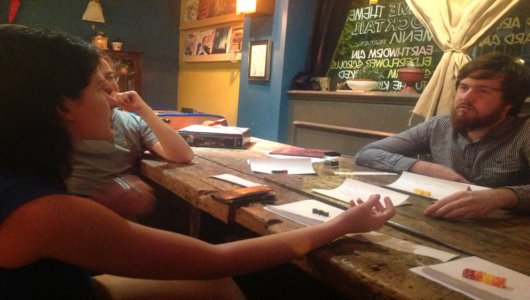

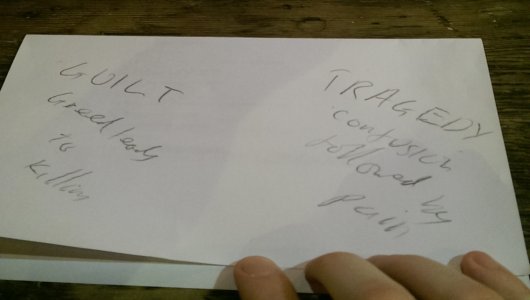

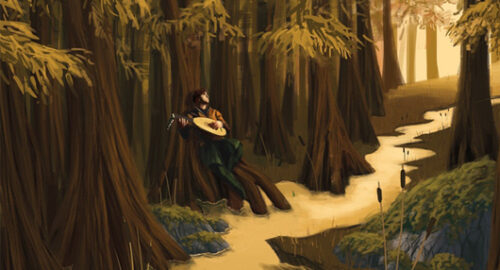
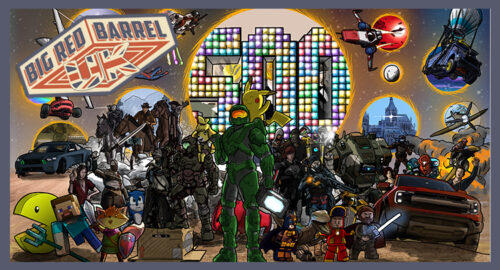
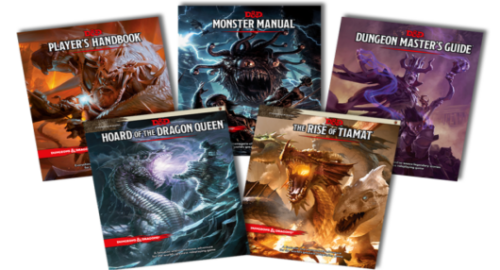
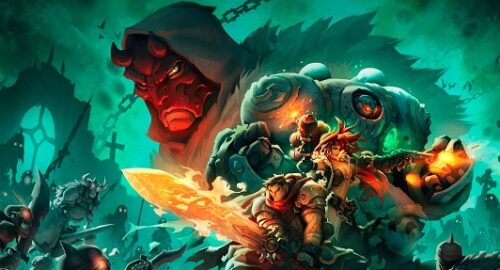
Calum
Fiasco is possibly the best roleplaying game ever written. I once got killed in a morgue in Vegas with a broken electrical cable for cheating at poker.